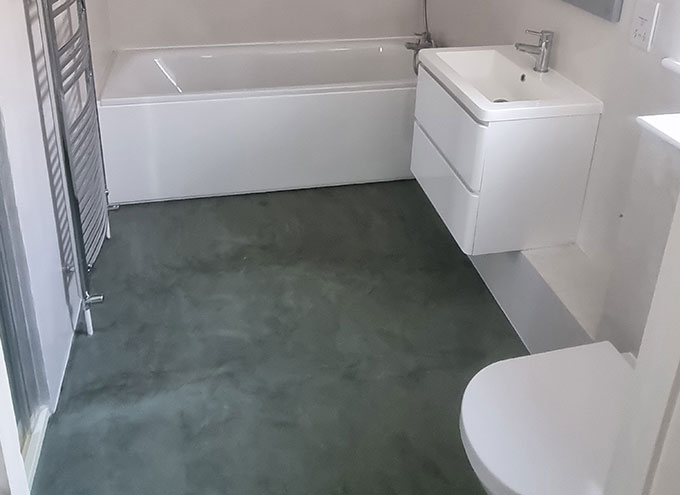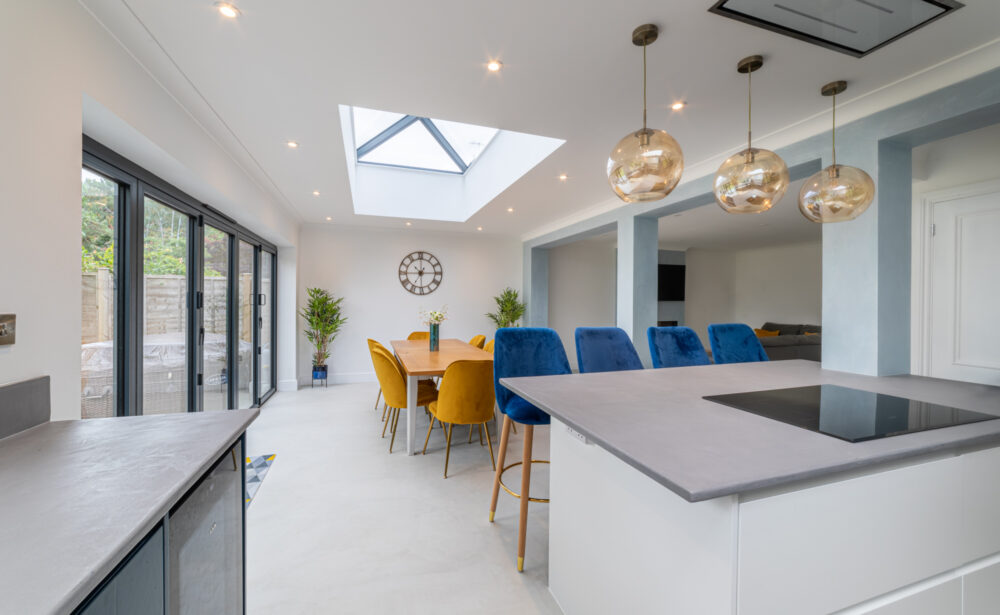Microcement for walls & bathrooms
Microcement can be used to create stunning and unique seamless walls that are easy to clean and hardwearing. This product is perfect for bathrooms, wet rooms, shower areas and kitchens due to the strength and waterproofing in high humidity areas.
Create a unique finish with a polished plaster bathroom, this includes micro cement bathtubs, sink basins and storage units.
There are 38 fundamental colours, pick one or mix and match to create a truly unique interior
Microcement for walls & bathrooms
Microcement can be used to create stunning and unique seamless walls that are easy to clean and hardwearing. This product is perfect for bathrooms, wet rooms, shower areas and kitchens due to the strength and waterproofing in high humidity areas.
Create a unique finish with a polished plaster bathroom, this includes micro cement bathtubs, sink basins and storage units.Microcement finishes are unique, no finish is the same due to it’s an application process.
Microcement finishes are unique, no finish is the same due to it’s an application process.
Microcement for floors
Microcement is a seamless concrete resin giving a unique finish to floors. Microcement is stain resistant, scratch resistant, hardwearing and waterproof, making it a perfect finish for floors all around the home.
Microcement can be applied any solid substrate including screeds, MDF flooring, Plywood, Tiles and much more.
Because Microcement is very thin once applied, it can adhere to floors where units and doors are already installed without having to make any adjustments.


Frequently asked questions
Despite its lack of thickness, one of this material’s most significant properties is its high resistance and hardness; Microdeck and Microstone can even be used in areas of high traffic.
Microcement can be applied to almost any type of support: cement mortar, self-levelling, terrazzo, marble, tile, plasterboard-Pladur or plaster, on both vertical and horizontal surfaces in interior and exterior spaces.
Never apply on natural wood or supports made of various sections which will distend differently.
The support must be consolidated and stable.
The surface must be dry and free of dust or grease.
The planimetry of the support will determine the final result.
Yes, but before applying it, a heating protocol must be carried out in order to avoid the possibility that expansion, produced by the temperature changes in the floor, will crack the microcement itself.
Microcement in itself is not impermeable. The use of a sealer as a final coating, which will ensure a water-proof capability is absolutely essential. Therefor microcement may be applied to sinks, bathtubs or wet areas, but the surface must always be sealed with either Topsealer DSV (solvent-based polyurethane), or with Topsealer WT (water-based polyurethane) to ensure its impermeability.
Yes, depending on the type of microcement used and the texture achieved, any type of non-slip surface is obtainable.
Although the aesthetic finish may appear similar, it is not the same.
With microcement one obtains greater advantages:
- Faster and easier application.No additional machinery or heavy tools required for its application.
- Less work. Less time. Lower Cost.
- Light and thus avoids structural load difficulties.
- For use in any room, not just on ground floors and basements.
- No joints involved, so no fissures appear following the drying process.
- Application possible on both vertical and horizontal surfaces.
The differences between Microcement and polished cement (fused concrete) for pavements, in terms of components:
It is necessary to differentiate between cement, cement mortar, and concrete. Cement is a component of both mortar and concrete that acts as a binder. The mortar is obtained by mixing sand plus water with the cement, while concrete is a cement mortar to which gravel is added.
Although they are all solutions to create pavements, in the case of Microcement the surface is seamless and continuous, while in the case of polished cement, printed concrete or loose concrete the surface is discontinuous (requiring expansion joints).
CONCRETE
Both polished concrete and printed concrete, such as darbied concrete, consist of a reinforced concrete slab to which a surface treatment is applied to achieve the final finish. They are discontinuous pavement solutions, formed by adjoining slabs requiring expansion joints to avoid cracking.
MICROCEMENT
Is a mortar whose granulometry of aggregates is relatively fine, it may be applied to both walls and floors, it has an approximate thickness of between 2 and 3 mm, requires no joints and does not crack. It adheres very well to any material and is applied by a steel or rubber trowel.

